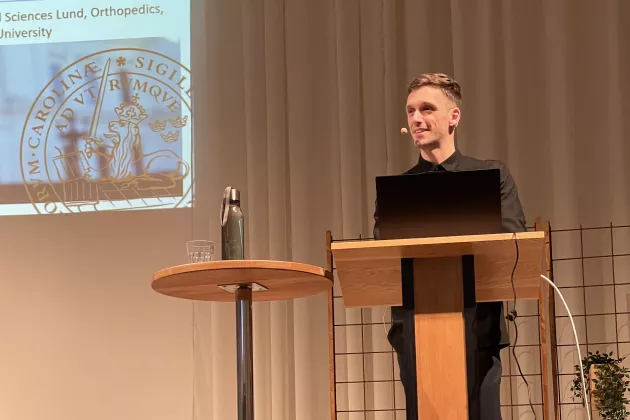Andrea's research primarily focuses on osteoarthritis within the community, examining how Sweden manages osteoarthritis, such as through exercise, prosthetic surgery, and more. He gathers the data and information required for his research from various registries. Andrea is particularly interested in understanding how other diseases, such as diabetes and high blood pressure, can affect joint health and the treatment of osteoarthritis. For instance, he investigates how the outcomes of exercise differ between those solely affected by osteoarthritis and those with additional conditions.
A physiotherapist can do a lot for someone with osteoarthritis. Andrea believes that some of the most crucial things they do involve assessing a person's joints and mobility to comprehend how function impacts their life. Furthermore, Andrea emphasizes the importance of not solely focusing on pain, for example, how much pain someone experiences in their knee, but rather understanding how that knee pain actually influences the person's life, allowing for targeted assistance. A physiotherapist aims to reduce the impact of the condition on daily life and finds strategies to do so, irrespective of pain.
"It's important to provide strategies on how individuals can handle different situations that may arise. For instance, it's common for pain to fluctuate. When pain has been better for a period and suddenly worsens, it's easy to think one has caused it oneself or that something in the injured joint has deteriorated. Andrea suggests this might not necessarily be the case; fluctuations in pain are natural. The crucial aspect is being aware of it and having a strategy to manage it so that pain doesn't excessively restrict daily life."
As known, it's possible to be affected by osteoarthritis in any joint, although it's more common in, for instance, the hip and knee than the foot and shoulder. Andrea explains that it's possible to exercise all joints, but more is known about some joints than others. Nevertheless, ongoing research might bring forth more information about the less common joints in the future.
Training strength and mobility around the affected joint is crucial for maintaining and improving function, but Andrea also suggests that exercise is essential overall, not solely focused on the painful joint.
Next week, the second part of the interview will follow. Don't miss it!
It's challenging to provide an exact answer on how someone affected by osteoarthritis should best contact a physiotherapist, but we advise contacting your healthcare center, which in most cases should be able to guide you further. Unfortunately, the Arthritis Portal cannot provide individual counseling.





